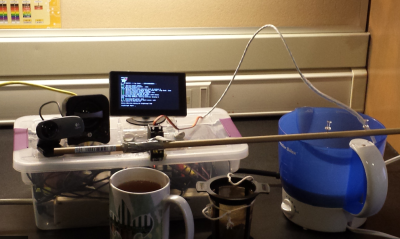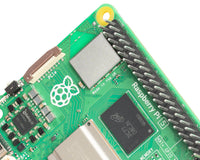
Raspberry Pi Roundup - 7th September 2016
More tea, vicar?

James P is on a quest. A quest many of us have embarked upon without success. Not for the Holy Grail, no. Something much more important: The perfect cup of tea! He explains:
(It is a project) designed to brew delicate loose-leaf or bagged teas at precise temperatures for the a high-quality consistent cup of tea.
He is developing a Raspberry Pi-controlled machine which will boil water, monitor when the leaves should be inserted (via servo control) and time how long they should be left in the water. The servos are then used again, removing the basket of leaves from the water. He is planning to add voice control to it (presumably just for the hell of it). Read his project log here.
Penetration testing

It has been possible to do penetration testing using your Pi for some time now, particularly with Kali Linux. However, it has now been made even simpler with a set of scripts known as Warberry Pi. The set of scripts runs when you plug in an Ethernet cable and collects as much information as it can about your network. You can then get the data off via SSH or by looking at the Pi directly.Full instructions and all the code can be found on GitHub.
Google Fucshia

Google is currently working on a new operating system called Fuchsia. According to reports, the operating system will be based on Magenta which is itself based on LittleKernel, a real-time operating system. Travis Geiselbrecht from Google has explicitly named the Raspberry Pi 3 as a specific system that the OS will run on and expects it be available ‘soon’. This is an exciting development because not only will it be another OS that will run on the Pi but it will give a real-time capability to our favourite single-board computer that it currently lacks.
Weaving

Fred Hoefler has developed a Raspberry Pi-powered motorised assistant for a hand weaver. The problem with hand weaving is that it is hard on the hands and arms and older weavers are often unable to continue their work due to the ravages of old age. Hoefler’s solution is to add several 12V motors with a Raspberry Pi acting as the brains. Machines like this are already in existence, but can cost around $10,000. So, he set himself the task that no single component in the project should cost more than the Pi itself! The whole build came in around $200. Very impressive! You can read more about this project over on Fred’s blog.





